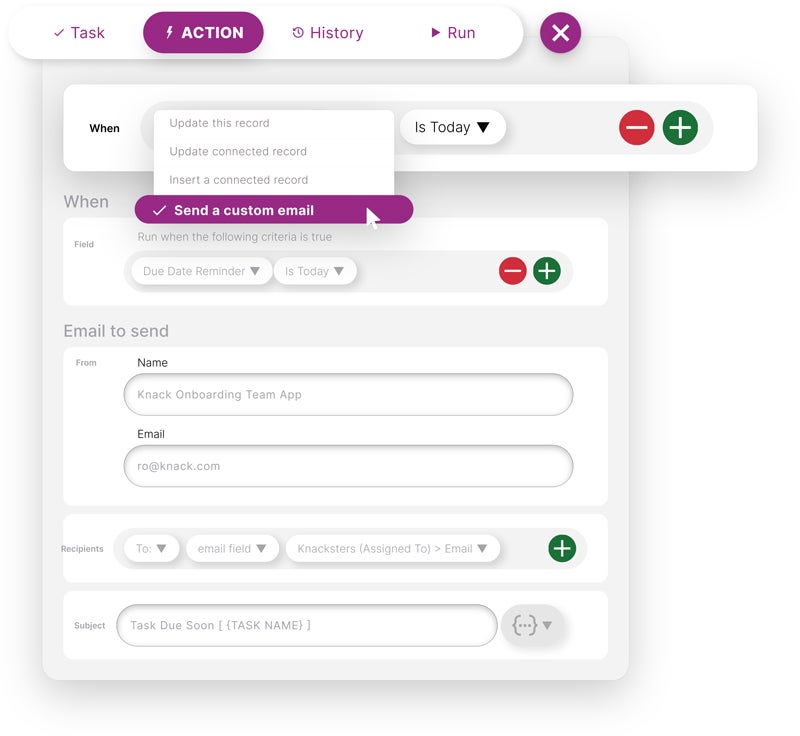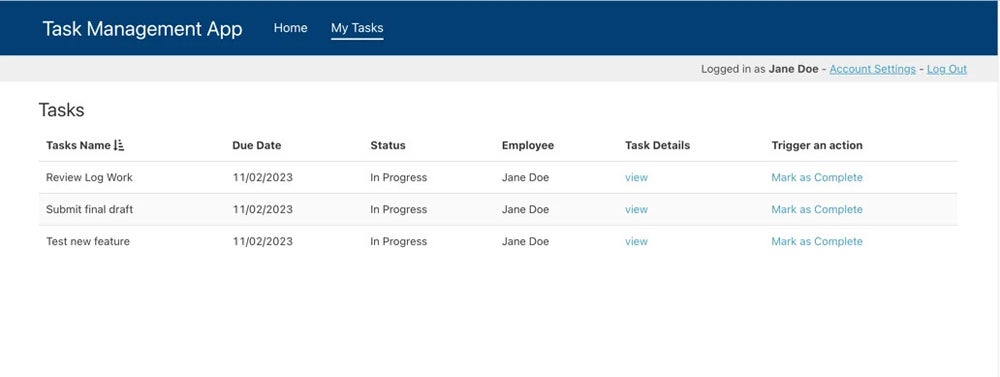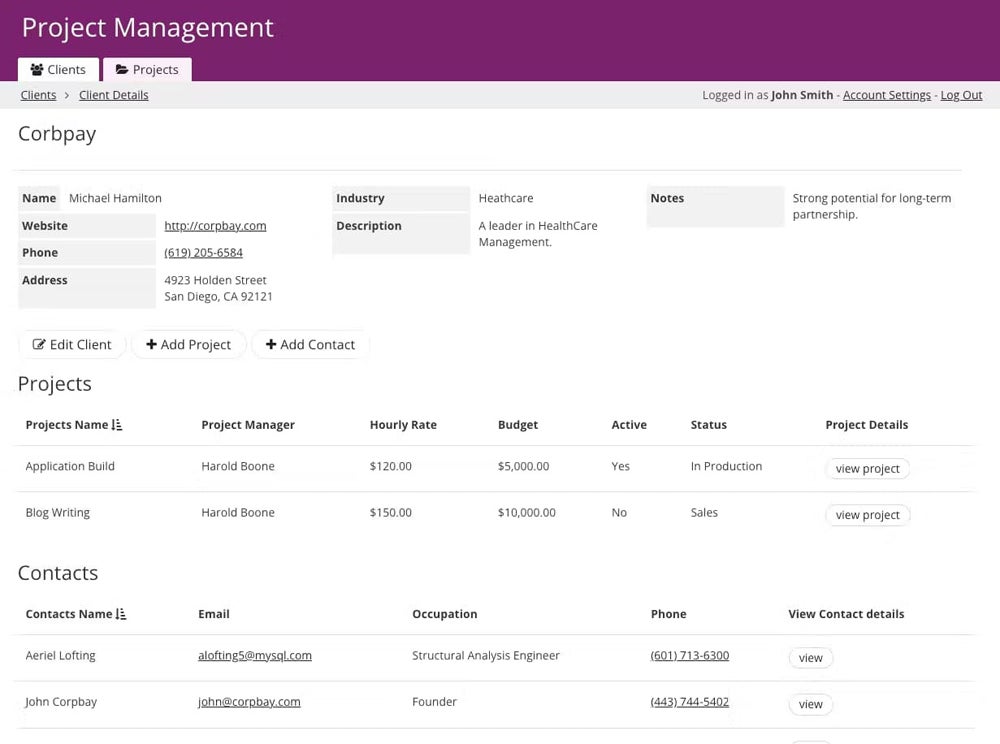What Is No-Code Automation?

No-code automation is the process of establishing automated workflows through a pre-configured software solution without the need for traditional coding. This development style allows citizen developers (those with no coding experience) to design bespoke dashboards, tools, or interfaces to fit their unique needs with ease.
What is no-code automation?
No-code automation allows anyone to harness the power of modern software regardless of coding ability. It provides an intuitive visual interface for the creation of highly-individualized platforms and processes, making business workflow automation and project management more efficient.
The main goal of this type of software is to be quick, easy, and accessible for all. That’s why it often uses simple, user-friendly mechanics such as point-and-click and drag-and-drop functionality to configure automations.
SEE: Learn more about the fundamentals of project management in this guide.
How does no-code automation work?
The process of no-code automation works by communicating between the user interface and the computer’s data through a series of pre-built components that the user can simply plug into their platform as needed.
No-code vs low-code
While still using pre-built components, low-code automation allows some coding to take place in order to facilitate more complex interactions to make the application more personalized to the user’s needs. This type of development is geared towards those with some coding experience who want to reduce the time they need to spend manually coding in order to build highly-customized applications or tools.
Types of no-code automation
No-code automation can be applied to many business processes, including:
Application development tools
Application development tools allow users to build custom applications without writing code. Some examples of application development tools include Knack and Draftbit.
Business intelligence tools
Business intelligence tools allow businesses to collect, process, and analyze large amounts of data, allowing users to visualize data in order to gain valuable insights that better guide business decisions. Some examples of business intelligence tools include Tableau and Databox.
Business Process Management (BPM) tools
These tools are intended to allow users to create and oversee the entire lifecycle of business processes from the design phase all the way through the execution phase, usually involving several departments. Examples of BPM tools include Pipefy and Microsoft Power Automate.
Database tools
Database tools are designed to allow users to visually create and manage databases to suit their unique needs. Examples of database tools include Airtable and Baserow.
SEE: 9 Best Airtable Alternatives for 2024
Form and survey builders
These builders allow users to create custom forms and surveys without coding. Examples of form and survey builders include SurveyMonkey and Google Forms.
Robotic Process Automation (RPA) tools
These tools are intended to automate mundane or redundant tasks typically performed manually to increase efficiency. They are best suited for rule-based tasks that don’t require decision-making. Examples of RPA tools are Nintex and Blue Prism.
Website builders
Website builders are designed to allow users to build customized websites to suit their needs without the need to code. Examples of website builders include SquareSpace and Webflow.
Workflow automation tools
Designed to automate repetitive tasks and processes without needing to code, and suited specifically for complex processes, these are focused on workflow efficiency. Examples of workflow automation tools include monday.com and Pipefy.
No-code automation use cases
Portfolio management
Gain a holistic view and understanding of your portfolio, from current financial statements and project priorities to overall performance.
Project tracking
Tracking project timelines, invoices, and dependencies by automating redundant tasks makes your project management easier and more efficient. Use plug-ins to leverage all of your tools on one platform.

Resource allocation
Improve your management and team efficiency by automating resource allocation and capacity planning. This is particularly useful when managing a project using the lean methodology.

Task management
No-code automation allows for tracking at every level, from checklists all the way up to sprints and roadmaps, making information accessible to stakeholders all in one place.

Work management
Empower scrum teams to define their work breakdown structures, create schedules, and track timesheets and task lists at various levels.

Benefits of codeless automation
Automating any amount of manual work through automation shows countless benefits to businesses and employees alike.
Reduced spending
By using no-code automation, both the personnel and time required for the project are reduced considerably due to the uniquely visual experience and lack of coding required on the back end of the application.
Accessibility
Because of the nature of no-code automation being for the citizen developer, no-code automation brings the design directly to the person who needs the tool. This reduces the amount of miscommunication that might occur when trying to explain the vision to a professional coder who might not understand the industry for which they’re building the tool.
Increased efficiency
By automating mundane, monotonous, or redundant tasks, businesses are able to reduce the time their employees spend on those tasks, increasing work output and decreasing human error. This reduces wasted time on revisions and corrections, allowing employees to focus their attention on the items that require human interaction.
Business agility and scalability
No-code automation allows companies to expand their offerings and business scale without traditional constraints. The automation of many tasks allows businesses to scale up and down as needed with the drag-and-drop capabilities. These changes are easily and quickly implemented in no-code platforms.
Frequently asked questions (FAQs)
What is the best codeless automation?
The best codeless automation depends on your specific needs. If you want to develop an app, you will likely choose different software than if your goal is to automate data tracking or build website surveys. It’s important to speak with all project stakeholders in order to determine which platforms will best help you reach your audience or maintain your workflow.
What are the disadvantages of codeless automation?
Because the components are pre-built, the user can only do so much to make their creation truly specific or bespoke to fit their needs. However, while the creations that come from no-code platforms are technically limited, the existing databases for pre-built components are so vast that finding a tool to suit your needs well enough without coding is highly likely.
Can project management be automated?
Yes, project management can be automated. While project management can’t be completely automatic, it can be automated in several manually redundant areas to reduce the time project managers are spending on minor tasks. With no-code software, you can automate sending reminders, delegating tasks to level out workload, emailing updates on progress, and more.
Source link






